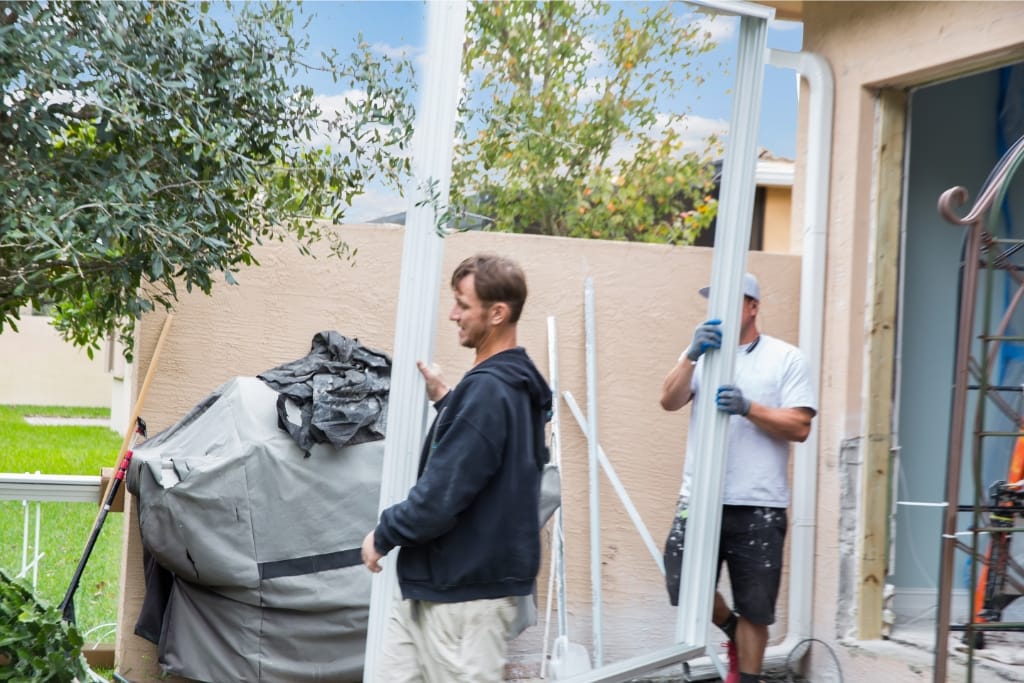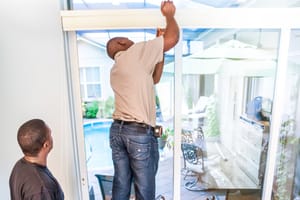Sliding doors are a fantastic addition to any home, providing a seamless connection between indoor and outdoor spaces while maximizing natural light.
However, over time, these doors may develop issues such as sticking, misalignment, or difficulty in sliding smoothly.
Before calling in a professional, there are several temporary fixes you can try on your own to address these common problems.
Ready to tackle your sliding door troubles and restore its functionality?
Read on to discover five effective DIY tips that can help you save time and money.
1)) Lubricate The Sliding Track For Smoother Operation
One of the most effective ways to address a sticking sliding door is to lubricate the track.
Over time, dirt and debris can accumulate on the track, causing friction and hindering smooth operation.
Start by thoroughly cleaning the track with a vacuum or a damp cloth to remove any visible obstructions.
Once the track is clean, apply a silicone-based lubricant, which is ideal for this purpose because it reduces friction while repelling dirt and moisture.
Be sure to apply the lubricant evenly along the entire length of the track and test the door by sliding it back and forth several times to ensure a seamless glide.
By taking this simple step, you can significantly enhance the door's performance and longevity, making it easier to operate without professional intervention.
2)) Tighten Or Replace Loose Screws And Hardware
Loose screws and hardware can be a common culprit behind misaligned or wobbly sliding doors.
To address this issue, first inspect the entire sliding door system, focusing on the screws in the track, frame, and rollers.
Use a screwdriver to tighten any loose screws, ensuring they are secure yet not overly tight, which could cause damage.
If you encounter any screws that are worn out or stripped, consider replacing them with new ones of the same size and type.
Check the door's rollers and hardware components for any visible wear or damage, replacing them if necessary.
By taking the time to properly tighten or replace these small but crucial components, you can restore stability and ensure that your sliding door operates smoothly and effectively without requiring professional help.
3)) Align Misplaced Or Tilted Sliding Door Rollers
Misaligned or tilted sliding door rollers can lead to uneven gliding and increased friction, making it essential to align them correctly.
Begin by examining the bottom rollers of the sliding door, as they often bear the brunt of the misalignment.
Carefully remove the door from its track if necessary, taking precautions to prevent damage or injury.
Once you have access to the rollers, adjust them using a screwdriver or roller adjustment tool.
Most sliding doors feature screws that allow you to alter the height and angle of the rollers.
Adjust these screws until the door sits evenly and smoothly within the track.
After re-positioning the rollers, reinstall the door and slide it open and closed to check the alignment.
By realigning the rollers, you can ensure that your sliding door glides effortlessly, prolonging its lifespan without the immediate need for expert assistance.
4)) Apply Weatherstripping To Seal Gaps And Reduce Drafts
Weatherstripping is an essential solution for sealing gaps in your sliding door, which can lead to drafts and increased energy costs.
Begin by identifying areas where gaps and air leaks are most prominent around the sliding door.
Once located, clean the surfaces to ensure proper adhesion, removing any dirt or debris.
Choose the appropriate weatherstripping material—such as foam tape, felt, or V-strip—based on the size of the gap and the door's movement.
Carefully apply the weatherstripping along the perimeter of the door frame, ensuring a snug fit without hindering the door's operation.
This additional barrier not only helps to keep your home warmer in winter and cooler in summer but also reduces noise and prevents moisture infiltration.
By applying weatherstripping, you can effectively enhance your home's energy efficiency and comfort, delaying the need for professional intervention.
5)) Clean And Remove Debris From Track And Rollers
One of the simplest yet most effective maintenance tasks for ensuring the smooth operation of your sliding door is to routinely clean and remove debris from both the track and the rollers.
Over time, small particles such as dirt, dust, and even pet hair can accumulate within these components, creating friction that hinders the door's movement.
Begin by opening the door fully to expose the track, then use a vacuum or a brush to sweep away loose debris.
In particularly grimy cases, a damp cloth or sponge with mild detergent may be necessary to wipe down the surfaces thoroughly.
Pay special attention to the rollers, as dirt can become embedded in these small mechanisms, complicating the door's glide.
After cleaning, inspect the rollers and track for any remaining obstructions or damage that might need further attention.
By regularly removing buildup from these areas, you can ensure your sliding door operates smoothly and extend its functional lifespan, postponing the need for professional maintenance.
Conclusion
By taking the initiative to perform these simple maintenance tasks, you can significantly enhance the functionality and longevity of your sliding doors.
Whether it's lubricating tracks, tightening hardware, aligning rollers, applying weatherstripping, or cleaning debris, each effort plays a vital role in ensuring smooth and efficient door operation.
Not only do these tasks help you avoid the inconvenience and expense of professional repairs, but they also contribute to the overall energy efficiency and comfort of your home.
With regular care and attention, your sliding doors will continue to serve as reliable, aesthetic components of your living space, preserving their integrity against wear and tear.
Download Our Free E-book!








